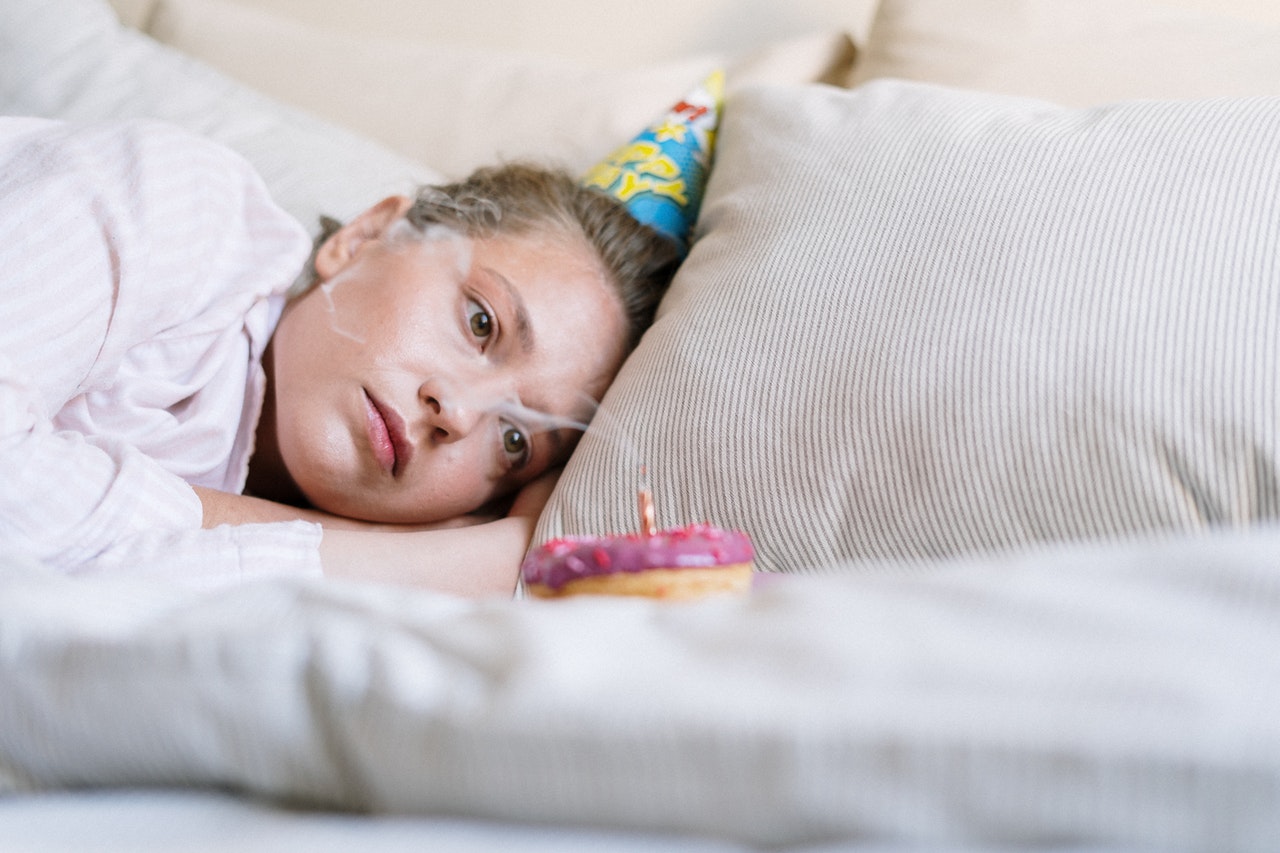

Make ADHD Your Superpower
This article aims to teach you how to utilize a practical framework to advocate for the support you need from coaches and other support providers;
Stress is something we will all encounter in our day-to-day lives. However, when an emotional response to extreme stress or a disturbing event is so strong it impairs someone’s ability to cope, this is a form of trauma. While trauma does not always result in developing Post-Traumatic Stress Disorder (PTSD), it is important to understand the signs and symptoms. The different levels of trauma can vary in severity, but believe it or not, one in three people who experience major trauma develop PTSD. It is commonly known to affect soldiers returning from combat, but PTSD is a condition that can affect anyone who has experienced or witnessed traumatic or life-changing events. The National Center for Post-Traumatic Stress Disorder reports that the condition affects 10% of women and 4% of men at some point in their lives. This article will examine what PTSD actually looks like, the treatment plan, and other helpful information to better understand the condition.
Definitions + How to Reduce the Impact of Trauma
It is important to note that there is a difference between trauma and PTSD. Not every reaction to trauma will automatically develop into PTSD.
Post Traumatic Stress Disorder is a mental health condition that develops when someone has experienced a traumatic event that leaves a strong impression on their psyche. People who experience trauma usually experience the stress, anxiety, and fear immediately following the event, whereas people who suffer from PTSD will continue to feel these harmful emotions long after the event has occurred. Like with all things, the level of severity will depend on your individual experience.
What Causes PTSD?
Some of the most common causes include:
You may be at further risk for developing PTSD if you do not get help following a traumatic event.
Reducing the Impact of Trauma
PTSD treatment is not always composed of medication and therapy. Sometimes, very basic actions can greatly reduce symptoms and improve overall mood and recovery. Some simple actions one can take are:
Similar to most mental and physical illnesses, certain lifestyle changes can be greatly beneficial to treating PTSD. Such as:
PTSD can add significant stress to your daily life, but there are many things you can do to keep yourself healthy and positive.
Symptoms
Post-Traumatic Stress Disorder has varying symptoms with different degrees of severity. However there are specific guidelines on what constitutes as PTSD. In order to be diagnosed with PTSD, you have to have had any of these symptoms for at least a month and have symptoms in the following categories:
Re-experiencing Symptoms
These are symptoms that cause the individual to re-experience the traumatic event that is the root of their PTSD. These symptoms are usually triggered and include flashbacks. Sweating and heart palpitations, nightmares, and frightening thoughts are all symptoms of this.
Reactivity and Arousal Symptoms
This refers to symptoms that are ongoing and not triggered by reminders. Because of this, symptoms can place a great deal of stress on the individual. These PTSD symptoms include: anger and irritability, lashing out at others, feeling tense, difficulty sleeping at night, and being easily startled.
Mood and Cognition Symptoms
Trauma can cause both physical and mental symptoms. People who suffer from PTSD will most likely experience mood and cognition symptoms (issues remembering parts of the trauma, loss of interest in activities they once enjoyed, feeling guilty or blame, having negative feelings about the world around them and themselves, and overall feeling detached from society.
Avoidance Symptoms
These symptoms may cause an individual to avoid any potential triggers that remind them of the traumatic event to the point where it disrupts their daily life. Examples of these symptoms include: avoiding feelings, thoughts, objects, places, people, or anything that may remind them of the traumatic event.
How to Recognize That Someone (or you) Has It
There are many different symptoms of PTSD, and sometimes they can be dismissed or misdiagnosed. Symptoms can change over time, interfere with one’s ability to go about their day, and may not diminish over time. If this is the case, it may be worth talking to a professional about a possible diagnosis. When considering if you or a loved one is suffering from PTSD, it is important to remember that the onset of symptoms is not just limited to after a traumatic event, but can show at any time. There are people who have reported experiencing symptoms decades after being exposed to trauma.
Military members are the most common group of PTSD patients. However, women are two times more likely to experience PTSD than men. This is often a result of trauma (physical or domestic violence or rape, typically). While some people may be predisposed, it can happen to anyone. It is important to know the symptoms and get help if you suspect you or someone you love may need it.
PTSD Test
There are screening tests available to help assess if someone is suffering from PTSD.
Some questions include:
And so forth. It is important to note that these questions are not designed to replace a licensed professional.
The most important question to ask yourself to determine if you are experiencing PTSD is: “have you experienced anything in your life that has caused immense fear, pain, or stress?”. There is the possibility that trauma might have been experienced without the individual realizing it, but it is far more likely that sufferers will know and understand that something significant has happened.
Then, you can ask yourself if you have relived that experience in your mind or body. This is in reference to the flashbacks associated with PTSD. Flashbacks are not a flash or a memory of the event, but it is a transportation to the event that has the same level of intensity to the point where individuals can see, smell, feel, or even taste the event that causes them trauma.
From there, you can see if you have experienced significant changes in your life as a result of that event. This answer is important because it determines the difference between an unpleasant event and PTSD. Trauma disrupts the way your brain functions and if you have experienced a significant source of trauma, you an develop PTSD.
Finally, ask yourself if you have experienced any flashbacks or indulged in avoidant behavior as a result of trauma. As we mentioned, these flashbacks can be very intense. Avoiding the place where traumatic events occurred or anything relates to that traumatic event is indicative of PTSD.
If you answer a confident “yes” to each of these questions, it would be a good idea to schedule an appointment with your healthcare provider. If you answered yes to some not all of these questions, it might still be a good idea to meet with your doctor to discuss your mental health. If you did not answer yes to any of these questions, it is likely you do not have PTSD, but there may be another mental health condition you are suffering from.
Treatment
PTSD can have a major impact on the lives of those whom it affects. Because it is so intense, treatment may be more involved than it is for other mental illnesses. Here are some of the best courses of treatment for coping with PTSD:
If you feel your symptoms are becoming intrusive or unmanageable, it is time to receive help. Having a strong support system and making a variety of changes can be very beneficial.
Therapy or Counseling
There are many different kinds of therapy and options available for people who suffer from PTSD. One of the most common is EMDR (Eye Movement Desensitization and Reprocessing). EMDR exposes patients to stimuli that are associated with their trauma. They then learn how to tolerate the distress and manage their PTSD symptoms. Cognitive Behavioral Therapy works to help patients reframe their thoughts and change their emotions. Someone suffering from this disorder may have a lot of anxiety surrounding their trauma, and when they learn how to manage their negative thoughts, it becomes easier for them to cope. Exposure Therapy is the method of exposing people gradually or rapidly to what they are afraid of until they learn to cope.
Counseling is another great treatment option for PTSD patients. It can be hard to get to a therapist’s office if you suffer from panic attacks. Counselors are available online so you can be in the safety and privacy of your own home while receiving therapy. This way, treatment can be on your own terms. Many online counselors specialize in treating trauma survivors. They will help you work on what you need and develop the skills necessary to really improve your quality of life. These are just two possible paths of many, many solutions and treatment plans.
Hotlines
Similar to most hotlines, the Post-Traumatic Stress Disorder hotlines are designed to help individuals with PTSD through guidance, telehealth, or pointing them in the direction of more assistance (therapist or other options). A PTSD hotline is not meant to replace a session with a professional therapist, but rather an avenue for people who are suffering from symptoms at the moment, have questions, or are unsure of what to do next. PTSD hotlines are free to use, so they can also be great places for questions about insurance or the lack thereof in regards to therapy. Hotlines do not guarantee callers a therapist, but they are
familiar and have many resources readily available to help. If someone is unable to leave home, hotlines can provide ways for them to receive help without leaving their home. These hotlines are operated by mental health professionals trained to provide safe and confidential places for callers to talk and be a resource for.
Do not be afraid to reach out to a hotline if you are in need of assistance or just want someone to talk to. Calls can be anonymous and are always confidential.
A Word from Mental Treat
If you are feeling overwhelmed and hopeless by symptoms of PTSD, contact your healthcare provider to discuss a diagnosis and treatment plan. You can also contact mental health facilities like Mental Treat to help connect you with a licensed professional who treats PTSD. Our professionals work both online or in person to ensure you have the type of treatment you desire. You are not alone in your struggle. If you see these warning signs in a friend or a loved one, reach out and offer support. The act of extending support can be incredibly beneficial to those afflicted with mental illnesses. For more information on how Mental Treat can help, visit our platform and connect with someone!


This article aims to teach you how to utilize a practical framework to advocate for the support you need from coaches and other support providers;


Do you know those happy couples on Instagram who seems like they have it all together? They have one thing in common: little to no sexual


Unfortunately, we often do not learn enough about what makes a relationship healthy. Even if we do, the lesson does not always stick when it comes


Online therapy, especially as a result of COVID-19, has become increasingly more popular. It is easy, you can do it from anywhere, and it eliminates the


Couples therapy is a great way to restore a relationship. If you and your partner are experiencing problems and looking to work through them, it could


As the holiday season approaches, not everyone is filled with cheer. Some people love the seasons and start decorating their houses as soon as possible. They